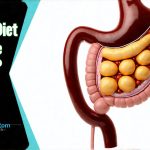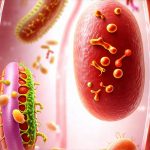The ketogenic diet, and low-carbohydrate approaches more broadly, have gained significant popularity in recent years due to their potential for weight management, improved blood sugar control, and other health benefits. However, the dramatic shift in macronutrient intake – drastically reducing carbohydrates while increasing fats – can often disrupt the delicate ecosystem within our gut. This disruption, commonly referred to as “keto flu” or digestive upset, isn’t necessarily an inherent part of ketogenic eating; rather, it frequently stems from a rapid change that doesn’t adequately support gut stability during the transition. Understanding how to proactively mitigate these effects is crucial for long-term success and enjoyment on a low-carb lifestyle.
Many individuals embarking on keto or low-carb diets focus solely on macronutrient tracking and calorie restriction, overlooking the vital role of gut health. The gut microbiome – the trillions of bacteria, fungi, viruses, and other microorganisms residing in our digestive tract – plays a critical role in digestion, nutrient absorption, immune function, and even mental wellbeing. A sudden reduction in carbohydrate intake significantly alters the food source for many beneficial gut bacteria, potentially leading to dysbiosis (an imbalance in the microbiome) and associated symptoms like bloating, constipation, diarrhea, or gas. Successfully navigating this transition requires a holistic approach that prioritizes not just what you eat, but also how your gut responds. If you are transitioning to a new diet, it’s important to be mindful of these changes.
The Gut-Carb Connection & Transition Challenges
The typical Western diet is heavily reliant on carbohydrates – refined sugars, starches, and processed foods. This carbohydrate intake feeds a diverse range of bacteria in the gut, some beneficial and others less so. When carbs are drastically reduced, the population of bacteria that thrive on them diminishes, while those adapted to utilizing fats and proteins may struggle initially. It’s not necessarily about eliminating all carbohydrates forever; it’s about the speed of reduction and providing alternative fuel sources for a healthy gut microbiome. A gradual transition allows your gut flora time to adapt and repopulate with more beneficial species.
The immediate shift often causes digestive discomfort because our bodies are accustomed to digesting carbs, and enzymes like amylase are readily available to break them down. Suddenly removing this primary energy source forces the digestive system to work harder, potentially leading to malabsorption and bloating. Furthermore, many low-carb diets emphasize increased fat intake, which can be challenging for some individuals to digest initially if their bodies aren’t accustomed to processing higher amounts of dietary fat. This is particularly true for those with pre-existing gallbladder issues or limited bile production.
Finally, the reduction in fiber intake is a significant concern. While it’s possible to obtain adequate fiber on keto/low-carb through non-starchy vegetables and certain seeds, many individuals inadvertently reduce their overall fiber consumption during the transition. Fiber acts as food for beneficial gut bacteria, promoting their growth and diversity. A lack of fiber can exacerbate dysbiosis and contribute to constipation or other digestive issues. Understanding indigestion while changing your diet is key.
Supporting Gut Microbiome Diversity
Maintaining a diverse microbiome is central to gut health. Here’s how you can support it while transitioning:
- Prioritize prebiotic foods: Prebiotics are non-digestible fibers that serve as food for beneficial bacteria in the gut. Excellent sources include garlic, onions, leeks, asparagus, Jerusalem artichokes, and chicory root. Incorporate these into your diet strategically, starting with small amounts to assess tolerance.
- Consider fermented foods: Fermented foods like sauerkraut, kimchi, kefir, yogurt (unsweetened), and kombucha are rich in probiotics – live microorganisms that can help replenish beneficial gut bacteria. Again, introduce them gradually, as some individuals may experience temporary digestive upset as the microbiome adjusts.
- Focus on fiber intake from low-carb sources: Non-starchy vegetables like broccoli, spinach, cauliflower, and zucchini provide valuable fiber without significantly impacting carbohydrate levels. Seeds like chia seeds and flaxseeds are also excellent sources of fiber and healthy fats.
It’s important to remember that probiotics aren’t a quick fix. While they can be beneficial, their effects are often transient unless supported by a prebiotic-rich diet. The goal isn’t just to introduce new bacteria but to create an environment where those bacteria can thrive long-term. Focusing on dietary changes that nourish existing and newly introduced beneficial microbes is crucial for lasting gut health. Many parents experience sensitive guts alongside their children, making diet transitions even more challenging.
Managing Digestive Discomfort During Transition
The “keto flu” – a collection of symptoms like fatigue, headache, nausea, and digestive upset – often accompanies the initial stages of carbohydrate restriction. These symptoms are largely due to electrolyte imbalances (sodium, potassium, magnesium) as the body adjusts to using fat for fuel. However, digestive components also play a significant role:
- Hydrate adequately: Water is essential for digestion and helps prevent constipation. Aim for at least 8 glasses of water per day, especially during the transition phase.
- Electrolyte supplementation: Supplementing with electrolytes can help mitigate many keto flu symptoms, including those related to digestive function. Sodium is often the first priority, followed by potassium and magnesium. Consider adding a pinch of sea salt to your water or consuming electrolyte-rich foods like avocados and spinach.
- Gradual carbohydrate reduction: Instead of abruptly cutting carbs, reduce them gradually over several weeks. This allows your gut microbiome time to adapt and minimizes digestive upset. Start with a moderate reduction and progressively lower intake as tolerated.
Furthermore, pay attention to food sensitivities. Some individuals may find that certain foods exacerbate their symptoms. Keeping a food diary can help identify potential triggers. It’s also important to avoid artificial sweeteners and sugar alcohols in excess, as they can sometimes contribute to bloating or diarrhea. Bloating while following a keto diet is common but manageable.
Addressing Constipation & Bloating
Constipation is a common complaint during the transition to keto/low-carb due to reduced fiber intake and changes in gut motility. Bloating can occur for similar reasons, along with potential issues digesting increased fat intake. Here’s how to address these:
- Increase fluid intake: As mentioned previously, adequate hydration is crucial for preventing constipation.
- Magnesium supplementation: Magnesium citrate or glycinate can have a mild laxative effect and help soften stools. Start with a low dose and gradually increase as needed. Always consult with your healthcare provider before starting any new supplement.
- Healthy fat digestion support: If bloating is related to fat malabsorption, consider incorporating digestive enzymes containing lipase (which helps break down fats). Bile salts can also be helpful for individuals with compromised gallbladder function.
- Gentle movement: Regular physical activity stimulates gut motility and helps prevent constipation. Even a short walk each day can make a difference.
If you experience constipation after dietary changes, remember to stay hydrated.
Ultimately, supporting gut stability during the transition to a ketogenic or low-carb diet requires a mindful and proactive approach. It’s not just about what you eliminate; it’s about what you add – prebiotic foods, fermented foods, adequate hydration, electrolytes, and gentle movement – to nourish your gut microbiome and facilitate a smooth transition. By prioritizing gut health alongside macronutrient tracking, you can maximize the benefits of low-carb eating while minimizing digestive discomfort and ensuring long-term success. If transitioning to a low-fat diet, these same principles apply.


















